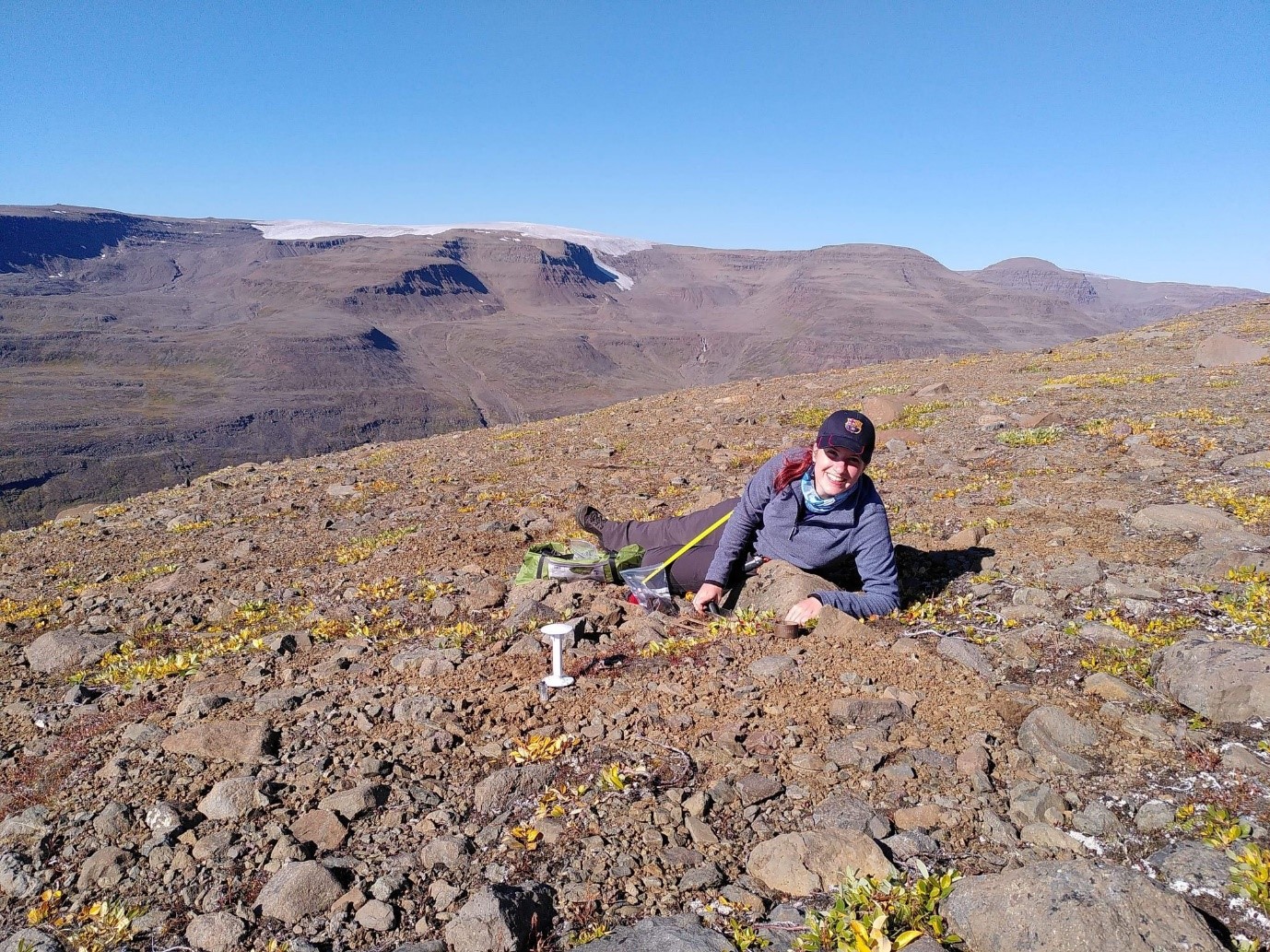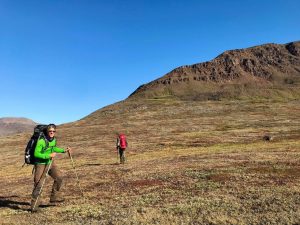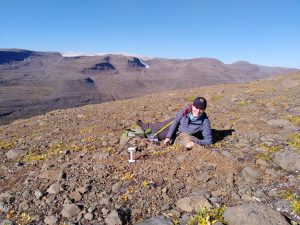
September 24, 2020, by Rob Ounsworth
Back in the field: greetings from the Arctic
Laura Turner, a second year PhD student in the School of Geography, recounts a ‘priceless experience’ – carrying out fieldwork in Greenland to study the effects of climate change
Climate change is altering many aspects of life in the Arctic, including increased growth of shrubs and changes to the timing of plant flowering and die-off. There are also changes to the dynamics of Arctic vegetation below the ground. My PhD, funded by the NERC (Natural Environment Research Council) Envision Doctoral Training Programme, aims to investigate how roots and the below-ground environment in the Arctic are impacted by environmental changes including warming and changing precipitation (rain and snow).
This could contribute to improving predictions of the effects of future climate change in the Arctic, including the impact on carbon storage and greenhouse gas emissions. My first year has focused on preparing for fieldwork at an experimental site in Siberia, in the Russian Arctic, drawing on the expertise of an international team of mentors.
I was devastated when my fieldwork in Siberia during the first year of my PhD was cancelled due to the pandemic.
My supervisors – Dr Franziska Schrodt and Dr Richard Field – and I began contingency planning, and we were able to organise a different trip to another part of the Arctic: Disko Island, Greenland. This was thanks to my supervisors’ connections with Signe Normand, who invited me to join some of her students to work on plots established last year by the VegDyn group at the University of Aarhus.
The trip wouldn’t have happened without the support of Sarah Metcalfe, Professor of Earth and Environmental Dynamics, who ensured that the fieldwork could go ahead with the support of the school and access to our funds.
Have you a mobile phone or a camera? We would like to highlight further inspiring examples of the resumption of our research and field studies.
This could be through blogs and photos or video. Recording your research projects and field studies to share with colleagues, collaborators and funders helps raise the profile of the University’s research and its impact, and is also a powerful tool to engage with potential students and new networks.
A few seconds of video, from a field trip or recording a significant discovery in a lab and posted on social media, could reach wider audiences for your research.
Please contact Research Communications Manager Rob Ounsworth for support and advice, and also take a look at this guidance on videoing your research.
Franziska generously used some of her own funding to enable the trip, and with the help of the University finance team, we were able to organise everything with very little notice. There were some hiccups (complications with Greenland’s COVID-19 testing rules and spending the night in Copenhagen airport weren’t ideal), but eventually, I made it to Disko Island.
More about Laura Turner and her research
My work focused on 25 plots which covered a range of soil conditions, vegetation types and elevations from the valley to 800m up the mountain. We placed a microclimate logger in each plot to measure the air and soil temperature and moisture at a high resolution in time and space. I then sampled the soil and the roots, taking samples of known volume to be frozen and analysed back in the UK for root traits such as morphology, nutrient content, mycorrhizal associations – collaborations with fungi to share resources. I was also lucky enough to sample another experiment, the University of Copenhagen Centre for Permafrost’s long-term investigation into the effects of changing winter precipitation using fences to alter snow depth. I’m very grateful for everyone at the Arctic Station for their support during the trip.
Check out #PolarWeek on Twitter for more stories of Arctic and Antarctic research
The opportunity to complete some fieldwork was priceless for me. After a difficult year, where working from home makes it so difficult to feel productive, I was able to achieve something very tangible. I spent most of the year after the lockdown began feeling like fieldwork was a near-impossible prospect. Now I have samples that will contribute directly to my PhD. I also made some great connections with other scientists (something sorely missed during lockdown) and gained experience that will help me plan future fieldwork – if I can return to the Arctic.
Contemplating next year’s field season is difficult in the current climate, but I’m hoping I’ll get to Siberia. In the meantime, I’m looking forward to getting into the lab to see what I can find out from my samples.
No comments yet, fill out a comment to be the first





Leave a Reply